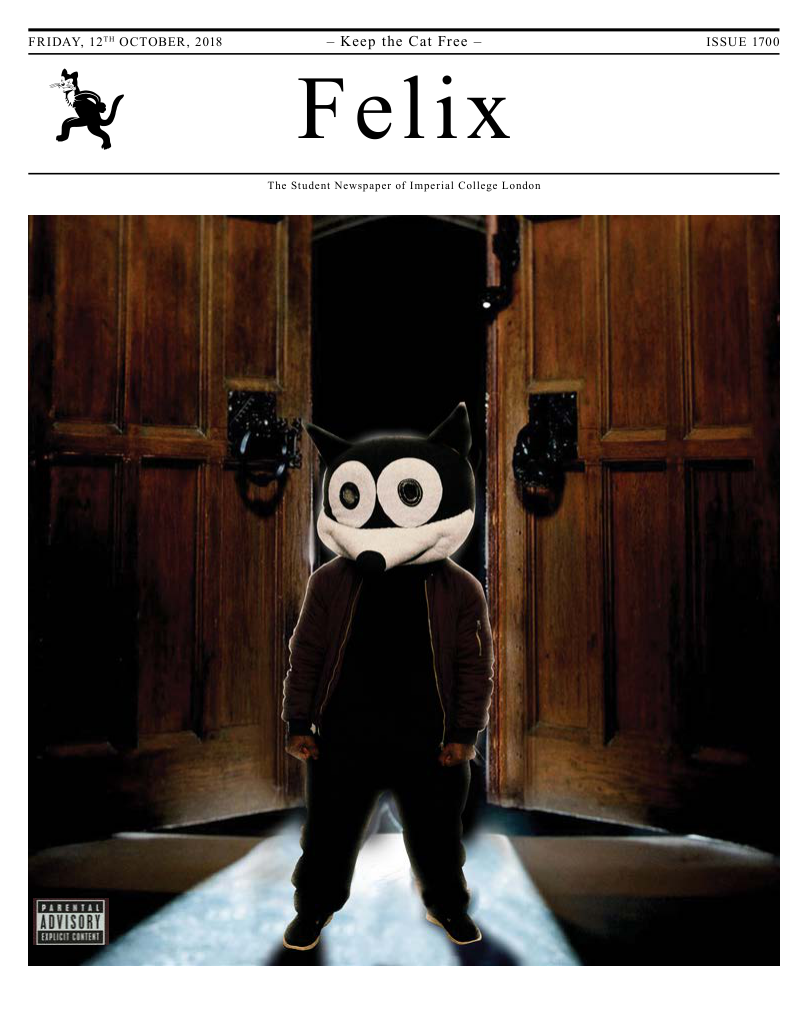Nobel Season: A Summary of the Prizes for 2018
A quick tour of who’s who and what’s what in this year’s greatest scientific achievements

Last week was Nobel Prize season, and whilst it’s not quite as glamorous as the Oscars, it comes with a lot of prestige and a chance to go down in history. These yearly prizes are awarded to those who make significant contributions in several categories outlined in the will of Alfred Nobel, with the three in science being given to Medicine, Physics and Chemistry. So, this week Felix Science will give you a rundown of the three science winners so you can sound cool and clever at welcome drinks.
The week began with the announcement of the Nobel in Physiology and Medicine, which was awarded to James Allison and Tasuku Honjo for the discovery of cancer therapy by inhibition of negative immune regulation, more commonly known as immunotherapy. The immune system is a powerful tool, and so directing it towards cancer therapy has been the dream of many scientists for a long time. However, at that time the systems in place to regulate the immune system were still a bit of a mystery. James Allison’s work focused on the catchily named CTLA-4, a protein involved in reducing T-Cell function. They developed an antibody that binds to this protein, inhibiting it and therefore increasing the immune response to a tumour. The results in mice were impressive, but many companies were reluctant to try it, as playing with the immune system is always risky business. However, eventually one company was brave enough, and this finally led to the development of Yervoy, an immunotherapy antibody for melanoma.
The second half of the prize goes to the discovery of PD-1, by Tasuku Honjo. This protein is similar in function to CTLA-4, and acts as another regulatory system to keep T-cells in check. Honjo also developed an antibody for this protein, and nowadays there are several oncology treatments based on PD-1 in the clinic. Immunotherapy has been a revolution in cancer treatment and has saved the lives of many people. What is equally exciting however is that this revolution is still going. There are still papers coming out on this subject, and only time will tell how these will impact how we treat cancer.
This year’s Physics Nobel went to ‘Advances in Laser Physics’ and was split, with one half going to Arthur Ashkin for the development of optical tweezers, and the other half going to Gérard Mourou and Donna Strickland for their work in the development of high-intensity ultra-short laser pulses.
Optical tweezers are a somewhat futuristic sounding tool that utilise lasers to trap and manipulate particles. These take advantage of the ability of light to exert force or radiation pressure on an object, and it was with the advent of lasers that the ability to use this force became a possibility. Optical tweezers have been shown to be able to move atoms, whole cells, and even organelles within a cell, and they have a myriad of uses throughout science. The other half of the Nobel went to the generation of high-intensity ultra-short laser pulses by Mourou and Strickland. Whilst this sounds a lot less exciting on the surface, they are vital for laser eye surgery and in laser machining. Mourou and Strickland created chirped pulse amplification by stretching the pulse in time and reducing the peak power, then amplifying the pulse , and finally recompressing the pulse in time resulting in large power pulses. This meant that pulsed laser devices became smaller and cheaper and opened up new areas of physics and led to development of corrective eye surgery.
Donna Strickland is the third woman ever to win the Nobel in physics, and her win has reignited the debate about recognising women in science. She is currently not a full professor and, until roughly 90 minutes after the prize was announced, she didn’t have a Wikipedia page as she wasn’t deemed noteworthy enough. Considering ‘Dusty the Klepto Kitty’ made the cut, that reason seems to be misjudged.
Finally, the Chemistry Nobel prize was announced, and this year half went to Frances Arnold for directed evolution of enzymes, and the other half to George P. Smith and Sir Gregory P. Winter for the phage display of antibodies and peptides. Now, some of the more keen-eyed readers might be thinking ‘hang on, that sounds an awful lot like biology’, but since there’s no prize for biology, the major contributions in areas like chemical biology get lumped into the chemistry prize.
Directed evolution of enzymes applies evolutionary ideas to producing enzymes that can do things that natural enzymes cannot. This involves taking enzymes and inducing a series of random mutations, and then weeding out the ones that are better at doing what you want and then doing the whole thing all over again. The original work tested this by producing an enzyme that was able to function in a solvent system that would have destroyed the starting enzyme. Since then there have been a great many other enzymes developed, including modified lipases that break down fat in laundry detergents. Arnold’s own spinout company develops biopesticides through directed evolution of enzymes. The rest of the prize is for the related technique of phage display. This uses bacteriophages, a virus that infects bacteria, to produce antibodies. Bacteriophages display proteins on their surface, and Smith worked out that they could produce any protein when the correct gene was inserted. Winters then used an evolutionary method like the one developed by Arnold to produce antibody-based drugs. Today there are several antibody-based drugs on the market, and the list is growing every day.







